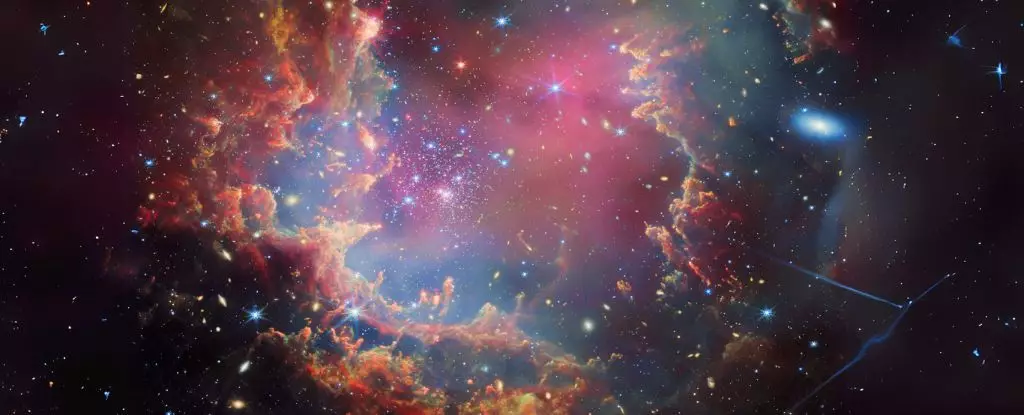Recent research has plunged us back billions of years into the cosmos, challenging our previous understanding of one of life’s most essential components: water. For decades, scientists posited that the early Universe, only a couple of hundred million years post-Big Bang, could not possibly harbor the ingredients necessary for water formation. Oxygen, the crucial partner for hydrogen in creating H2O, was thought to be in short supply. However, new simulations led by cosmologist Daniel Whalen and his team at Portsmouth University tell a different story; they suggest that conditions for crafting water may have been ripe much earlier than previously imagined.
By simulating supernovae in the young Universe, researchers have unearthed evidence pointing to the presence of water within primordial galaxies. Using parameters reflecting the early Universe, they’ve illustrated how gaseous elements from the Big Bang could coalesce into stars and explode into the cosmos, delivering heavier elements—oxygen included—into the void. This new perspective offers a radical shift in how we understand the timeline of life’s essential elixir.
The simulations reveal that when some of those early stars—massive powerhouses ranging from 13 to an astonishing 200 times the mass of our Sun—met their explosive ends, they released not just energy but also the essential materials for water formation. The conditions created during these supernovae events provided the high temperatures and pressures necessary to fuse lighter elements into heavier, oxygen-rich compounds. Essentially, these cataclysmic explosions not only illuminated the darkness of the Universe but also acted as cosmic factories for some of the very elements that may sustain life.
As stellar remnants cooled, they began to generate molecular hydrogen—another key ingredient for water—and, where conditions were favorable, the denser cores might have nurtured water’s formation. The implications are staggering: if water existed in such abundance so early on, it raises questions about the potential for life elsewhere in our galaxy and beyond. The notion that primordial water could have existed at a time we once thought barren is not only exciting but also turns the long-held narrative on its head.
The research suggests that the metallic content of these first stars could catalyze the formation of rocky planets in protoplanetary disks around low-mass stars. It’s a tantalizing idea that hints at the possibility of Earth-like worlds forming earlier than we imagined. Water could be present not only on these celestial bodies but also in surrounding environments, significantly altering our understanding of where life may emerge.
While the research confirms that multiple supernova explosions in a galactic halo offer greater chances for water to survive, it also highlights the vulnerability of water in less dense areas. In regions where gasses thin out, water could easily be destroyed by subsequent stellar activity. Yet, in denser cloud cores, the shielding provided by dust from radiation offers a sanctuary for water molecules to thrive, underscoring the complex dynamics that influence water’s fate in the Universe.
What does this mean for the search for extraterrestrial life? If water was present in the early Universe and could survive various cosmic ordeals, it begs the question: how many planets, equipped with the fundamentals of life, exist beyond our solar reach? Water’s existence on exoplanets might not just be a curiosity; instead, it could become a fundamental prerequisite in our quest to find life.
The suggestion that conditions for early water creation were possible hints that the Universe may have been more conducive to life than once thought. This radical concept opens a Pandora’s box for astrobiologists and cosmologists alike. By expanding our understanding of water’s origins and its journey throughout cosmic history, we recalibrate the potential locations and timelines for life beyond Earth.
This significant leap in cosmic perspective not only enriches our understanding of the Universe’s history but posits a far more dynamic and interconnected view of the stellar processes that could lead to life. The fabric of the Universe is woven tighter than we once believed, hinting at the vast potential waiting to be uncovered in the cosmic sea.


Leave a Reply